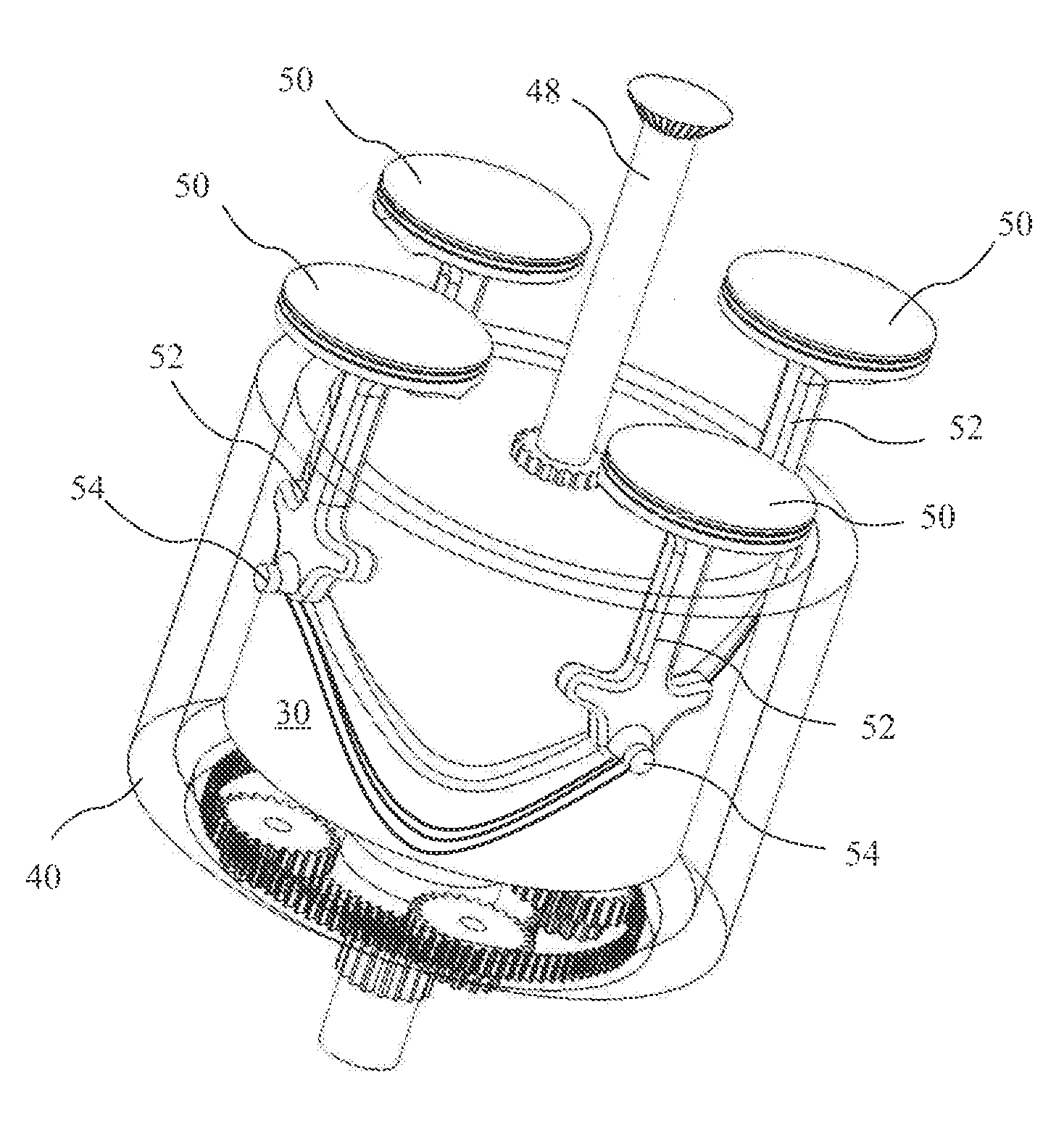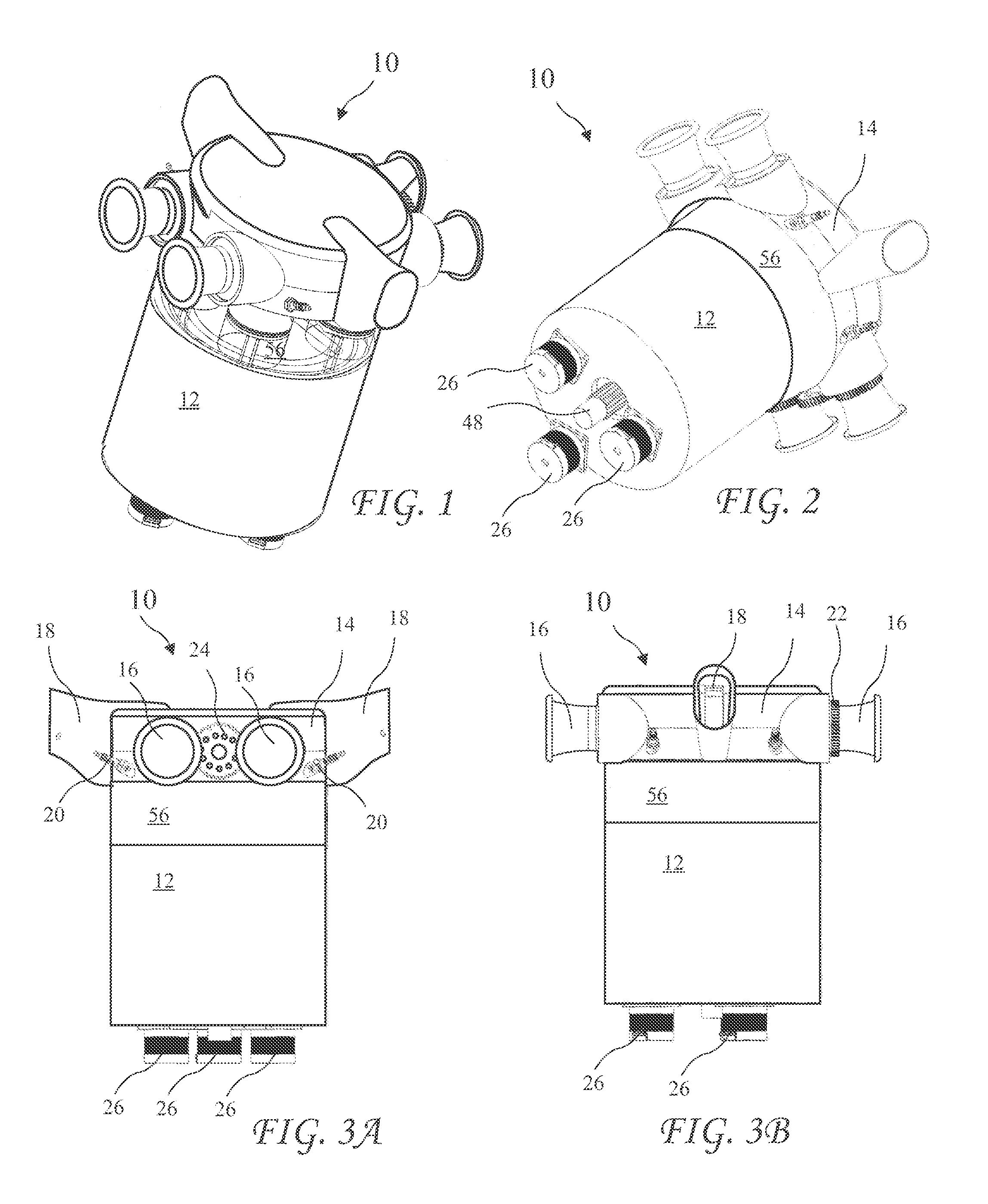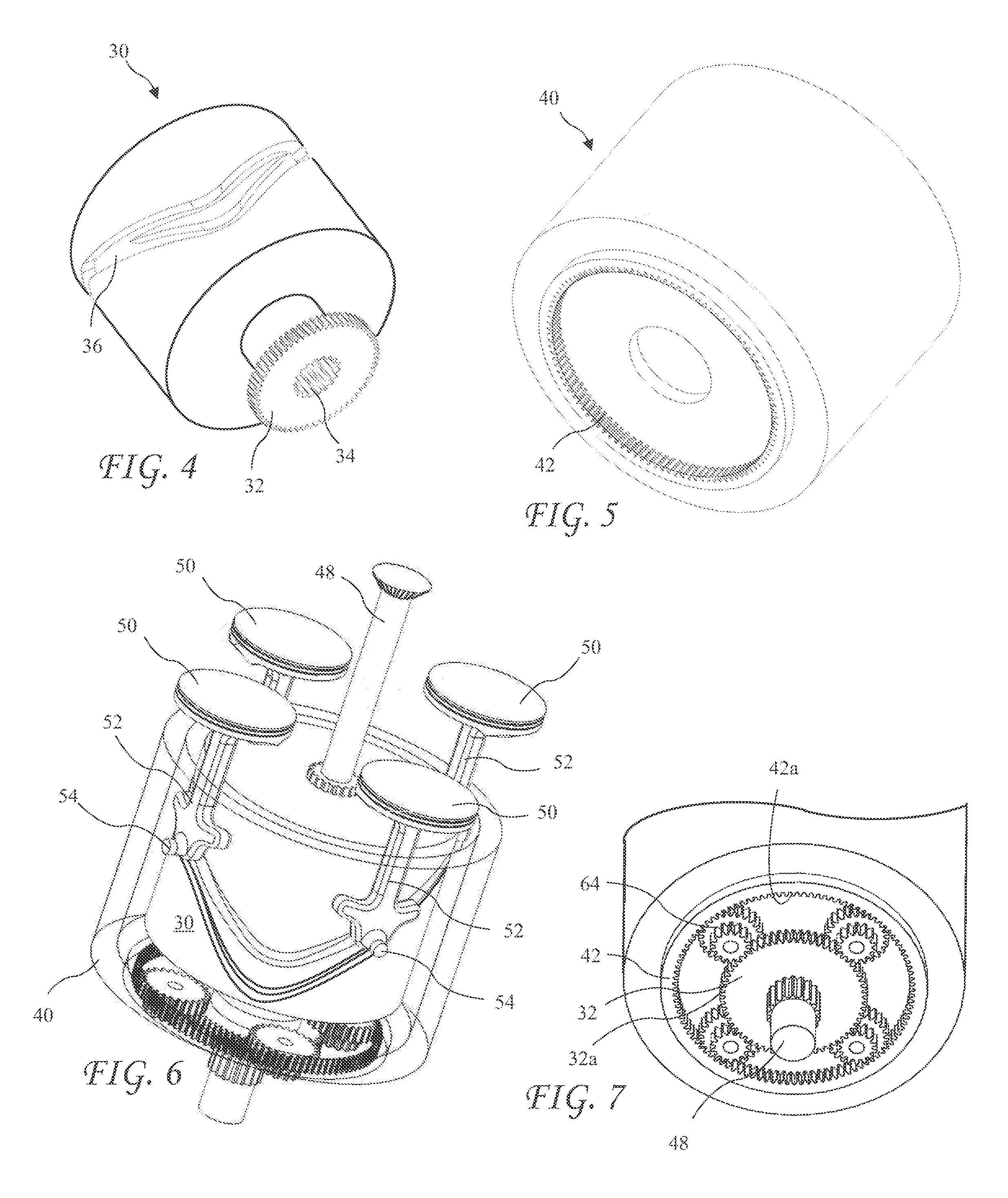Double cam axial engine with over-expansion, variable compression, constant volume combustion, rotary valves and water injection for regenerative cooling
a double cam axial engine and variable compression technology, which is applied in the direction of reciprocating piston engines, engines, positive displacement engines, etc., can solve the problems of internal combustion engines that are theoretically less efficient at partial throttle settings, damage and eventual failure, and reduce compression work, increase compression ratio, and increase compression ratio
- Summary
- Abstract
- Description
- Claims
- Application Information
AI Technical Summary
Benefits of technology
Problems solved by technology
Method used
Image
Examples
Embodiment Construction
[0044]The following description is of the best mode presently contemplated for carrying out the invention. This description is not to be taken in a limiting sense, but is made merely for the purpose of describing one or more preferred embodiments of the invention. The scope of the invention should be determined with reference to the claims.
[0045]A top and side perspective view of an axial engine 10 according to the present invention is shown in FIG. 1, a bottom and side perspective view of the axial engine 10 is shown in FIG. 2, a first side view of the axial engine 10 is shown in FIG. 3A, and a second side view of the axial engine 10 is shown in FIG. 3B. The axial engine 10 includes a head 14 fixed to a cylinder block 56. An engine housing 12 is fixed to the cylinder block 56 opposite to the head 14. The cylinder head 14 includes air intakes 16, exhaust headers 18, spark plugs 20, and a rotary valve drive gear 24. Other preferred elements of the head 14 are shown in FIGS. 15-18. Se...
PUM
 Login to View More
Login to View More Abstract
Description
Claims
Application Information
 Login to View More
Login to View More - R&D
- Intellectual Property
- Life Sciences
- Materials
- Tech Scout
- Unparalleled Data Quality
- Higher Quality Content
- 60% Fewer Hallucinations
Browse by: Latest US Patents, China's latest patents, Technical Efficacy Thesaurus, Application Domain, Technology Topic, Popular Technical Reports.
© 2025 PatSnap. All rights reserved.Legal|Privacy policy|Modern Slavery Act Transparency Statement|Sitemap|About US| Contact US: help@patsnap.com



